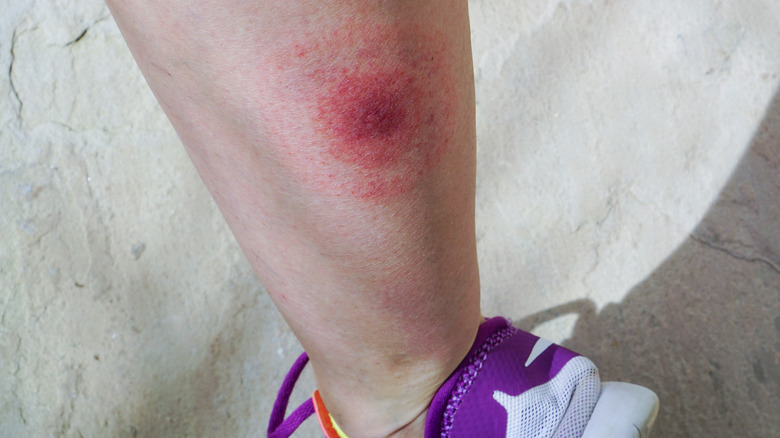The Common Illness That Doctors Often Miss
Receiving the right diagnosis isn't as straightforward as it seems. Many health conditions have non-specific symptoms, making it difficult to figure out the cause. For example, fatigue can be due to depression, liver disease, arthritis, fibromyalgia, cardiovascular problems, or sleep disorders, notes WebMD. The same goes for joint pain, heart palpitations, poor appetite, and other common health complaints. These symptoms can indicate anything from anxiety to infections to nutrient deficiencies.
Given these aspects, it's no surprise that millions of Americans are incorrectly diagnosed. A 2014 study published in BMJ Quality and Safety found that one in 20 American adults receive the wrong diagnosis in outpatient facilities. Moreover, one in 10 patients with cancer or other life-threatening diseases is misdiagnosed and treated for a different condition, reports a 2020 review featured in the journal Diagnosis. Such medical errors can be fatal or lead to serious complications.
We may have access to the latest medical equipment, but this doesn't guarantee a correct diagnosis. Even the most experienced medical professionals can make mistakes, especially when it comes to "invisible" illnesses, such as fibromyalgia, lupus, or chronic fatigue syndrome. It's estimated that more than 96% of chronic diseases fall into this category. While some ailments can manifest themselves in a variety of ways, posing further challenges to patients and health professionals alike, there is one common illness that is too often missed by doctors.
Lyme, the disease with a thousand faces, is often misdiagnosed
Most people have heard of Lyme, an infectious disease caused by tick bites. What you may know is that it's one of the most commonly misdiagnosed illnesses because it mimics other conditions, such as depression or chronic fatigue, says AARP. For this reason, Lyme is often referred to as the "disease with a thousand faces," according to a 2013 case study published in Open Access Scientific Reports. Its symptoms vary from one person to another and may include muscle or joint pain, headaches, fever, heart inflammation, nerve damage, swollen lymph nodes, and more.
The above case study describes the experience of a 14-year-old girl who was admitted to the hospital with fever, shortness of breath, swollen tonsils, difficulty swallowing, and weakness. Doctors prescribed antibiotics, but her condition worsened. Some of her symptoms indicated arthritis, sepsis, or mononucleosis, while others were associated with leptospirosis or pneumonia. After further testing, she was diagnosed with Lyme disease and received appropriate treatment.
Unfortunately, few cases have a positive outcome. IGeneX, a research organization that specializes in Lyme disease testing, reports that fewer than 25% of sufferers receive the correct diagnosis within six months of contracting the disorder. More than 60% have to wait two years or longer to get an accurate diagnosis. Meanwhile, they go from one doctor to another and undergo all sorts of tests without knowing what causes their symptoms. Many of them end up quitting work, cutting back work hours, or having to go on disability.
Lyme disease tests are not always accurate
The clinical hallmark of Lyme disease is erythema migrans, a circular rash that develops around the tick bite. Also known as a bull's eye rash, this symptom may come and go and can last for several weeks, explains Cedars-Sinai. However, not everyone will develop a rash. Additionally, erythema migrans isn't always a sign of Lyme disease, according to 2017 research featured in the journal Case Reports.
Blood work can help diagnose this condition, but the results are often inaccurate. Lyme disease tests range in sensitivity from 7.4% to 86.2% and can generate false positives or false negatives, leading to misdiagnosis (via LymeDisease.org). A 2016 review published in PLoS One found that most tests are flawed or have low sensitivity. On top of that, results are subject to interpretation and may differ from one lab to another. In one study, the testing system promoted by the Centers for Disease Control and Prevention generated false negatives in 88 out of every 200 people with Lyme disease, reports the BMJ.
All in all, diagnosing this condition can be challenging and time-consuming. Those afflicted often get multiple tests at their own expense, but their questions remain answered. If you suspect you have Lyme disease, ask your doctor to recommend a specialist. Most importantly, act early after getting a tick bite and don't hesitate to ask for a second or third opinion.



